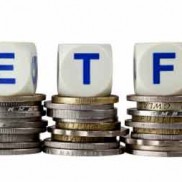Exchange traded funds (ETF’s) have enjoyed nearly a quarter of a century of existence in the global markets, with their first American variant, the SPDR S&P 500 Trust, recently celebrating its second decade on the NYSE. The many advantages of ETF investing include safety, tax and cost efficiency, and portfolio diversification. Despite these advantages, it’s unfair to paint a flattering brush across all ETF’s. They’re not perfect, and making certain assumptions about them can cost you. Here are a few common misconceptions investors hold when it comes to choosing ETF’s over other investments, and some ways that acting on these false beliefs can haemorrhage your savings.
ETF Fees Are Always Lower than Managed Fund Fees
ETF’s are touted as low-expense alternatives to mutual funds. This statement is often true, with equity managed funds charging an average fee of 1.5 to 2.0%, whereas ETF’s generally charge close to 0.44%. Be careful assuming that all ETF’s are cheaper, however. Some managed funds have fees comparable to those of ETF’s, and some charge even less. Take, for example, the Schwab Small-Cap Index Fund, which has 80% of its holdings included in the Russell 2000® Index. Its annual expense ratio is 0.17%. The iShares Russell 2000 ETF, on the other hand, charges 0.23%. Exercise care in finding a sector fund to invest a portion of your portfolio in. You might be missing out on potential savings if you assume that ETF’s are the best choice.
ETF’s Are Tax-Efficient
ETF’s are, in many ways, a better investment than managed funds when it comes to paying the tax man. Managed fund owners are subject to taxes on income, whether it is from capital gains earned from the selling of a security in the fund or from interest payments. ETF’s, however, utilise in-kind transactions of securities in the fund to relieve investors from having to foot the tax bill whenever a security is sold for a profit in the ETF. Many ETF investors believe that the only tax they have to pay is from capital gains after selling ETF shares for a profit. This belief is true, unless your ETF pays dividends or bond interest, which are typically taxed at ordinary-income rates. Make sure you know the details about ETF taxes and how to reduce taxes on ETF gains before making any assumptions.
Bond and Treasury ETF’s Are Safe Places to Preserve Principal
If you’re approaching retirement, you might be considering a fund that allocates most of its holdings to safe, capital-preserving assets like bonds. While it is true that these vehicles will diversify your portfolio across different bonds, pay out distributions periodically and provide more flexibility than buying bonds in the traditional way, they have one major drawback. Bond ETF’s are traded like any other security, and thus are subject to market fluctuations. A bond ETF portfolio can just as easily see losses as any other equity portfolio. For example, if you had purchased the Vanguard Extended Duration Treasury ETF six months ago, your holdings in this U.S. Treasury index follower would have seen a negative return of approximately 14%.
The Bottom Line
ETF’s offer a wide variety of benefits for both buy-and-hold investors and active traders. They make it easy to diversify a portfolio without incurring significant fees and taxes, and facilitate investing in different sectors without having to go through a lengthy selection process yourself. However, don’t let broad generalizations about ETF’s convince you that they’re entirely right for your portfolio. Make sure to scrutinize your investments carefully before committing your retirement savings to any particular ETF – the extra effort might save you some money in the long run.

Leave a Reply